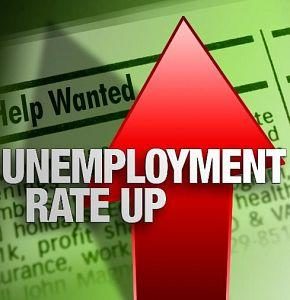
SPRINGFIELD – The Illinois Department of Employment Security (IDES) announced today that the unemployment rate jumped +12.2 percentage points to 16.4 percent, while nonfarm payrolls shed -762,200 jobs in April, as the COVID-19 pandemic continued to impact Illinois businesses and households, based on preliminary data provided by the U.S. Bureau of Labor Statistics (BLS) and released by IDES. The monthly unemployment rate rose to a new record high since current methodologies were enacted in 1976 and the monthly decline in nonfarm payroll jobs also set a record. The March monthly change in payrolls was revised from the preliminary report from -34,100 to -60,900 jobs. The March unemployment rate was also revised from the preliminary report, from 4.6 percent to 4.2 percent, as a result of a downward revision to the number of people in the labor force in March.
The April payroll jobs estimate and unemployment rate reflects activity for the week including the 12th. The BLS has published FAQs for the April payroll jobs and the unemployment rate.
The state’s unemployment rate was +1.7 percentage point higher than the record high national unemployment rate reported for April, which was 14.7 percent, up +10.3 percentage points from the previous month. The Illinois unemployment rate was up +12.2 percentage points from a year ago when it was 4.2 percent.
The three-month average Illinois payroll employment estimate was down -278,200 jobs during the February to April three-month period, compared to the January to March three-month period. The largest average declines were found in Leisure and Hospitality (-107,800), Trade, Transportation and Utilities (-37,700) and Professional and Business Services (-36,800).
“The COVID-19 pandemic has had an unprecedented impact on our economy, as has been the case in states across the nation,” said Deputy Governor Dan Hynes. “As we move to safely reopen much of our economy, we are focused on ensuring working families and small business have the resources they need to recover, and we urge the federal government to step up and provide additional relief.”
“As Illinois tackles this unprecedented crisis, Governor Pritzker has taken action to support a swift public health recovery that will in turn enable residents and businesses to make an economic recovery,” said Erin Guthrie, Director of the Department of Commerce and Economic Opportunity. “This administration’s focus on workforce development, rebuilding our crumbling infrastructure, and creating new industries will help us start to bring Illinoisans back to work and rebuild our economy.”
Compared to a year ago, nonfarm payroll employment decreased by -822,800 jobs, with losses across all major industries. The industry groups with the biggest jobs decreases were: Leisure and Hospitality (-320,500), Professional and Business Services (-119,800) and Trade, Transportation and Utilities (-110,000). Illinois nonfarm payrolls were down -13.4 percent over-the-year as compared to the nation’s -12.9 percent over-the-year decline in April.
The number of unemployed workers increased dramatically from the prior month, a +280.3 percent increase to 1,004,400, a new record high, and was up +270.6 percent over the same month for the prior year. The labor force was down -2.9 percent over-the-month and -5.2 percent over-the-year. The unemployment rate identifies those individuals who are out of work and seeking employment.
An individual who exhausts or is ineligible for benefits is still reflected in the unemployment rate if they actively seek work. IDES maintains the state’s largest job search engine, Illinois Job Link (IJL), to help connect jobseekers to employers who are hiring, which recently showed 186,374 posted resumes with 62,412 jobs available.
Seasonally Adjusted Unemployment Rates
Illinois Seasonally Adjusted Nonfarm Jobs – by Major Industry
• 2015-2019 seasonally adjusted labor force data for Illinois, and all other states, have been revised as required by the U.S. Bureau of Labor Statistics (BLS). The monthly historical revisions to state labor force estimates reflect new national benchmark controls, state working-age population controls, seasonal factors, as well as updated total nonfarm jobs and unemployment benefits claims inputs. Illinois labor force data were also smoothed to eliminate large monthly changes as a result of volatility in the monthly Census Population Survey (CPS) and national benchmarking. For these reasons, the comments and tables citing unemployment rates in previous news releases/materials may no longer be valid.
• Monthly seasonally adjusted unemployment rates for Illinois and the Chicago-Naperville-Arlington Heights Metropolitan Division are available here.
• Monthly 2011-2019 seasonally adjusted nonfarm payroll employment data for Illinois have been revised. To control for potential survey error, the estimates are benchmarked annually to universal counts derived primarily from unemployment insurance tax reports.
• Not seasonally adjusted jobs data with industry detail are available here. “Other Services” include activities in three broad categories: personal and laundry; repair and maintenance; and religious, grant making, civic and professional organizations. Seasonally adjusted data for subsectors within industries are not available.
About the Department of Employment Security
The Illinois Department of Employment Security (IDES) provides vital employment services to Illinois workers, employers, and job seekers with resources including Job Fairs and Illinois Job Link, analyzes and disseminates actionable Labor Market Information, and administers the Unemployment Insurance Program. To see the full range of services provided by IDES, and for the latest news concerning the department, visit IDES.Illinois.gov.














